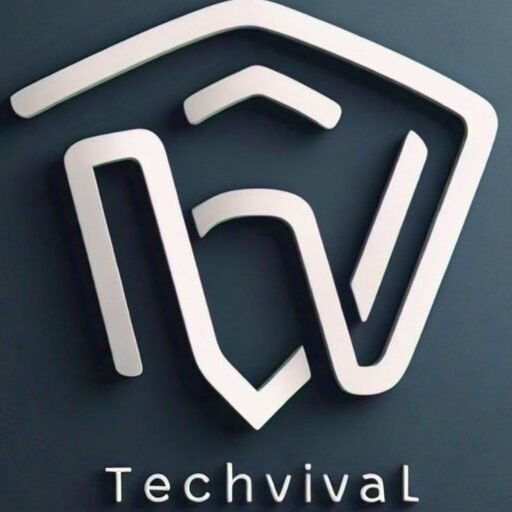Introduction: Data scientist coding interview questions & Answers.
In the rapidly growing field of data science, coding proficiency is becoming increasingly vital for professionals, and learning some data scientist coding interview questions and answers is essential to get you ready before the D-Day.
Data scientists are required to possess programming skills and a deep understanding of coding techniques to effectively handle data collection, cleaning, and processing.
To secure your dream data scientist job, it’s essential to prepare for coding-related interview questions. In this article, we will provide you with six common data scientist coding interview questions, along with comprehensive answers and valuable tips to maximize your chances of success.
1. How would you handle an aggregation, categorization, and ratio in the same query?
To tackle this question, you need to demonstrate your knowledge of aggregations, categorizations, and ratios, as well as your problem-solving approach. When answering, provide a step-by-step solution and consider incorporating a real-life example.
Sample Answer: “In SQL, I am well-versed in handling such scenarios. To address all three elements in a single query, I would begin by constructing a CASE statement.
Once the CASE statement is established, I would proceed with aggregating the results and then calculating the desired ratio based on the aggregated data. It may also involve converting data types from integers to floats to obtain an output between zero and one.”
2. When would you use a subquery in the WHERE clause?
Subqueries in the WHERE clause are frequently discussed in data scientist interviews to evaluate your experience and understanding. Explain the purpose of a subquery in the WHERE clause and provide a specific example of when you utilized one.
Sample Answer: “Subqueries in the WHERE clause prove invaluable for qualifying a column against rows from different tables. I recently encountered a situation where I needed to determine the top-performing student on an exam. By employing a subquery in the WHERE clause, I was able to retrieve the student’s grade from the main query and identify the one with the highest score.”
3. What are some common types of window functions in SQL?
A question about window functions in SQL assesses your proficiency in utilizing these functions, which are fundamental in data science. It’s crucial to mention the names of common window functions and explain when each should be used.
Sample Answer: “Working extensively with time series data, I frequently employ window functions to analyze growing metrics and month-over-month rolling trends. I also utilize generating statistics window functions for calculating simple statistics like medians, percentiles, and quartiles.
Moreover, I rely on regular aggregate functions to group and aggregate data efficiently. Lastly, ranking functions come in handy when I need to rank datasets based on specific criteria.”
4. Are you familiar with date manipulations?
Proficiency in date manipulations is a vital skill for data scientists, and interviewers often test candidates on this topic. Describe a specific example where you used date manipulation techniques and highlight the outcome you achieved.
Sample Answer: “In my work, I frequently encounter date manipulations to gather insights based on specific timeframes. For instance, I recently collaborated with a pizza shop aiming to optimize their employee hours. By analyzing monthly and daily data provided by the shop, I applied date manipulation techniques to identify the hours with the highest average order volume, enabling the shop to allocate staffing resources more effectively.”
5. Can you describe what a JOIN is?
JOIN clauses in SQL are crucial for combining rows from different tables based on related columns. The interviewer wants to gauge your understanding of JOINs and your ability to utilize them effectively. Explain the purpose of a JOIN clause and provide a project example that highlights its practical use.
Sample Answer: “A JOIN clause allows us to merge rows from multiple tables, resulting in a comprehensive view of the data. In a recent project for an online retailer, I needed to combine a table containing order dates and customer names with another table containing customer names and order dates. By utilizing a JOIN clause, I was able to create a unified table that displayed all three columns, facilitating analysis and decision-making.”
6. What programming language do you prefer?
Data scientists often have experience with multiple programming languages. When answering this question, discuss a couple of programming languages you are proficient in and highlight the reasons behind your preference. If you have an equal affinity for multiple languages, explain the unique advantages of each.
Sample Answer: “Among the programming languages I am most comfortable with, SQL and Python stand out. SQL allows me to efficiently organize and extract meaningful insights from complex datasets. On the other hand, Python provides versatility and a wide range of libraries and frameworks for various project requirements. I appreciate SQL for its data manipulation capabilities and Python for its robustness in implementing machine learning algorithms and statistical analyses.”
Tips for a Successful Data Scientist Interview:
1. Review the fundamentals:
– Refresh your knowledge of data structures like arrays, strings, sets, and trees.
– Familiarize yourself with algorithms such as dynamic programming, recursion, binary search, and sorting.
– Study supervised and unsupervised machine learning models, including decision trees, logistic regression, and k-means clustering.
– Brush up on mathematical and statistical concepts relevant to data science, such as simulations, prime numbers, and divisibility algorithms.
2. Research common interview questions:
– Go beyond technical questions and explore common interview topics like strengths, weaknesses, behaviors, and habits.
– Think ahead about how you can effectively address these topics to craft compelling responses during the interview.
3. Conduct practice interviews:
– Enlist the help of a friend or trusted peer to conduct mock interviews.
– Provide them with a list of potential questions and simulate the interview experience.
– Seek feedback on your performance to identify areas for improvement.
4. Utilize the STAR method:
– Structure your answers using the Situation, Task, Action, and Result (STAR) technique.
– Describe the specific situation or problem, your role in it, the actions you took to resolve it, and the outcome of your actions.
– Applying this method helps you provide concise and impactful responses, especially when discussing challenging situations.
5. Ask clarifying questions in data scientist coding interview:
– During real-time coding problems, if the question or requirements are unclear, ask the interviewer for clarification instead of making assumptions.
– Asking relevant questions demonstrates your communication skills and ensures you complete the problem successfully.
Conclusion:
Mastering data scientist coding interviews requires a strong foundation in programming, problem-solving abilities, and effective communication. By preparing for common coding interview questions and following the tips provided, you can enhance your chances of securing your desired data scientist position. Remember to showcase your technical knowledge, practical experience, and enthusiasm for leveraging coding skills to tackle complex data challenges.




Abosede Abisola Adebanjo
V/A Team 1.
1)Compare and contrast the roles of a general virtual assistant and a specialized virtual assistant. Provide at least two examples of specializations a virtual assistant might choose:
A General V/A’s role is broader in scope and depth in offering administrative assistance to client than a Specialized V/A.The General V/A takes care of virtually every aspect of the company’s management and administrative process ,its an all encompassing job whilst a Speciialized V/A takes Care of only an aspect of Administrative management with their special skills set like maybe Social media V/A that takes care of ensuring the Social media demands of the client is taking care of by clearing emails logs ,engaging followers ,replying to posts from clients on SM handles,managing the clients calendar to schedule meetings so there won’t be a class and such duties ,a General V/A takes care of SM,Technical, Travel arrangements, create website and manage it for the client.A General V/A also takes care of overall project management of the client couple with Real Estate and Administration.The General scope of work is very broad compared to a Specialised V/A.
Two Examples of Specialisatons are :A)Executive V/A
B) Technical V/A.
2)Select three of the essential tools for virtual assistants covered in the curriculum. For each tool, describe its primary function and how it enhances a VA’s workflow.
A)Cloud storage tools.
B)Communication and Collaboration tools.
C)CRM tools.
Cloud storage tools are basically used to store files digitally and keep the clients documentation professionally organized and properly labelled and documented for easy access e.g Google Drive ,Dropbox and Cloud.
B)Communication and Collaboration tools are used for effective Communication, meetings and important virtual face to face activities with clients, instead of having a physically meet ,using Zoom,Google meet ,Skype, using these video conferencing tools make it possible to have clear communications remotely and client consultations.
C)CRM tools ,Customer Relationship management tools ease up the work of a V/A by allowing one to gather data from a customer website, email, phone and social media accounts seamlessly, a V/A can easily use data gathered to manage the clients schedule ,meetings, calendar management to ensure there is no clash ,coordinate Travel arrangement and effectively manage the Social media handles of a client,we have hubsport,Zendesk,Freshworks,Monday.com amongst others .
3)Explain the concept of “niching down” for a virtual Assistant .Discuss two benefits and one potential challenge of choosing a niche focus:
Nichingdown simply means specialising in a work pattern that best describe you ,finding what interests you and what best describe your person within the broad V/A market ,what you can comfortably flow with so you can enjoy your job as a remote V/A .
If you discover your niche you will be more effective and your productivity will increase because you enjoy what you do .
You cater for clients with specific needs and requirements.
Advantage:
1)By focusing on a niche, V/A’s will definitely develop expertise and knowledge within that aspect ,this will enhance work flow and eventually provide quality service and solutions to the demands of those clients in that particular niche .
2)Nichingdown allow a V/A to target their market efforts more effectively, this focused approach often results in attracting higher quality leads who are looking for specific expertise in such area.It increases visibility for V/A’s and more Bussiness as well.
Disadvantage: Nichingdown trends to Limit a V/A’s potential as well as client pool,only those clients in your niche will be attracted to do Bussiness with you which may not be enough to sustain your Bussiness as a V/A.
Possible alternatives in this situations can be seen in giving bonus to worker’s as a means of compensation for overtime and also giving awards to worker’s as a form of recognition for work done which will inturn boost their morale.